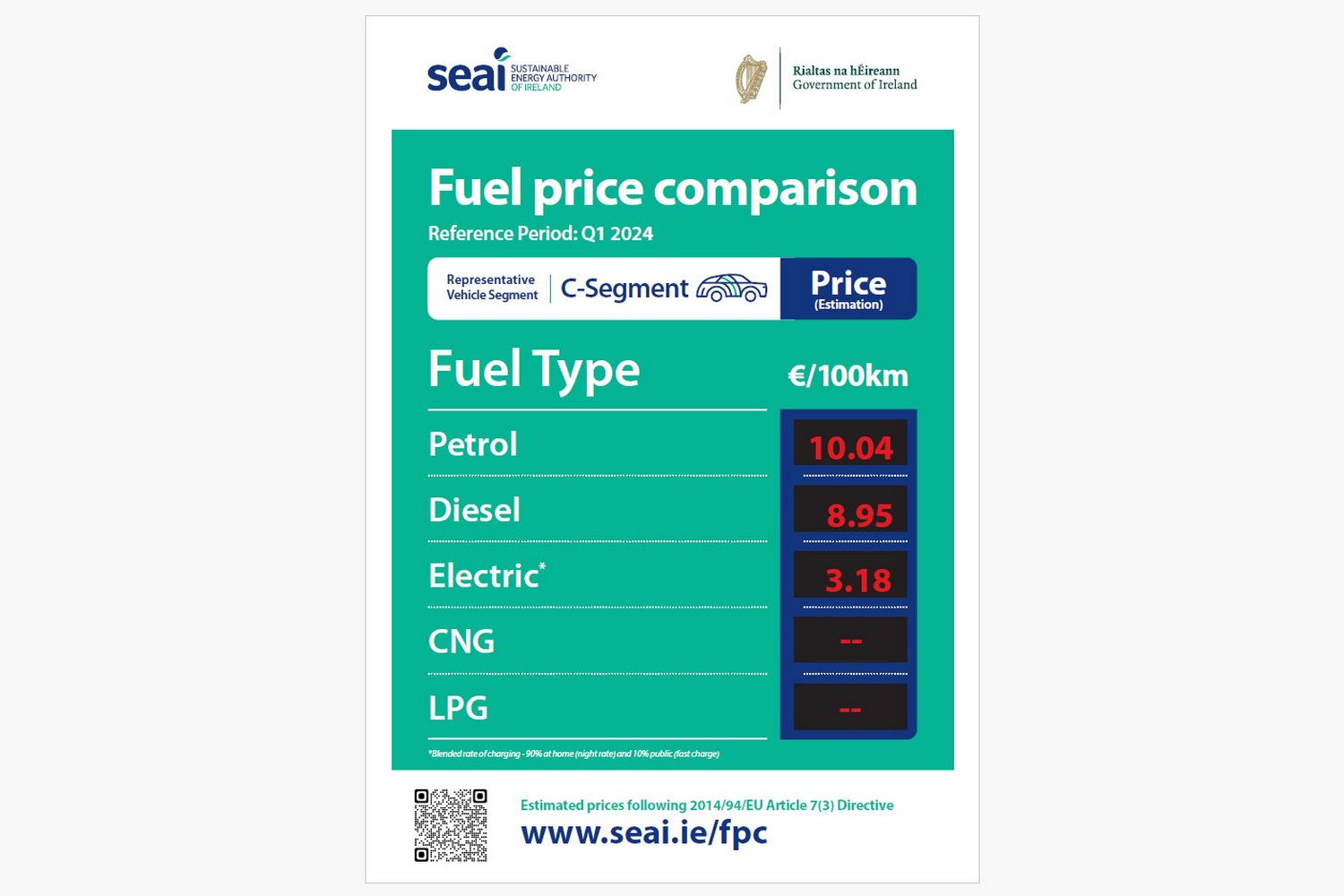Fuel retailers are now required to display new signs showing the price comparison between driving 100km on electric power as compared to filling up with petrol or diesel.
The signs, compiled by the Sustainable Energy Authority of Ireland (SEAI), directly compare the prices of driving 100km in an average car. For the first signs, covering the first quarter of 2024, the figures are €10.04 for petrol, €8.95 for diesel, and €3.18 for electric. The figures given are for a notional 'c-segment' vehicle, which can be assumed to be similar in size to a VW Golf.
Assumptions made
Now, there are some other assumptions being made by the SEAI to reach that electric figure. The petrol and diesel prices are based on the current monthly average prices as reported by the AA. The electric price per 100km is based on a mixture of charging at home and charging publicly. The SEAI's assumption is that 90 per cent of charging will be at home and 10 per cent will be done publicly. That's probably a safe enough assumption for those with a home charger, but it doesn't account for anyone who is still reliant on public charging for their EV.
At least it's better than the current SEAI table featured on the website, which still assumes that 100 per cent of charging is done at home and doesn't account for any public charging. According to SEAI's own Domestic Fuel Price Comparison, the home charging rate is assumed to be the overnight 14c per kWh cost (again, it's worth pointing out that some people may not be able to access such an affordable night rate, while indeed others might well be able to access even cheaper charging).
Cheaper public DC charging
As for the public charging costs assumption, in this area, the SEAI might actually be over-estimating the cost, as it goes off the pay-as-you-go prices for public DC chargers and does not take into account the lower charging prices, which are available with monthly paid memberships.
For the cars themselves, the data is taken as an average of the three best-selling cars for the past year, and works out an average energy consumption based on the official WLTP figure. That could be potentially misleading, however. A recent study by WhatCar? magazine found that some electric models can fall short of their claimed range by up to 38 per cent, depending on weather conditions, necessitating more charging for long journeys which would drive up the cost.
Equally, even though the WLTP test is tougher than the old NEDC test, few internal combustion engined cars will meet their claimed figures on a given journey, potentially increasing their cost per 100km figure.
Retailers push back
Some fuel retailers have baulked at the idea of displaying this information. The Convenience Stores and Newsagents Association (CSNA) have complained about the new signs, claiming that it's unfair to make shops display information which points out that a rival product is cheaper. "It is tantamount to requiring a pork butcher to advise customers about the relative value of a range of vegan food, or a bank being obliged to download the Bonkers website, and that failure to do so was an offence," Vincent Jennings, CEO of the CSNA, told The Irish Independent. "We have not been given any prior knowledge of this, and we note that when the work on it was carried out in Europe in 2021, the Irish State were not participants in any of the preparatory discussions."
However, the requirement to display the price comparison signs is not down to the Irish Government, it's an EU regulation - specifically, it's S.I. No. 703/2022 - European Union (Deployment of Alternative Fuels Infrastructure) (Fuel Price Comparison) Regulations 2022. The SEAI has pointed out that any fuel retailer failing to display the signs could be liable for a €500 fine.

